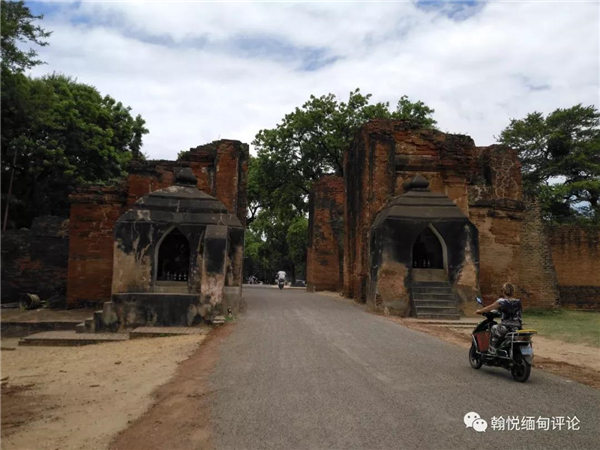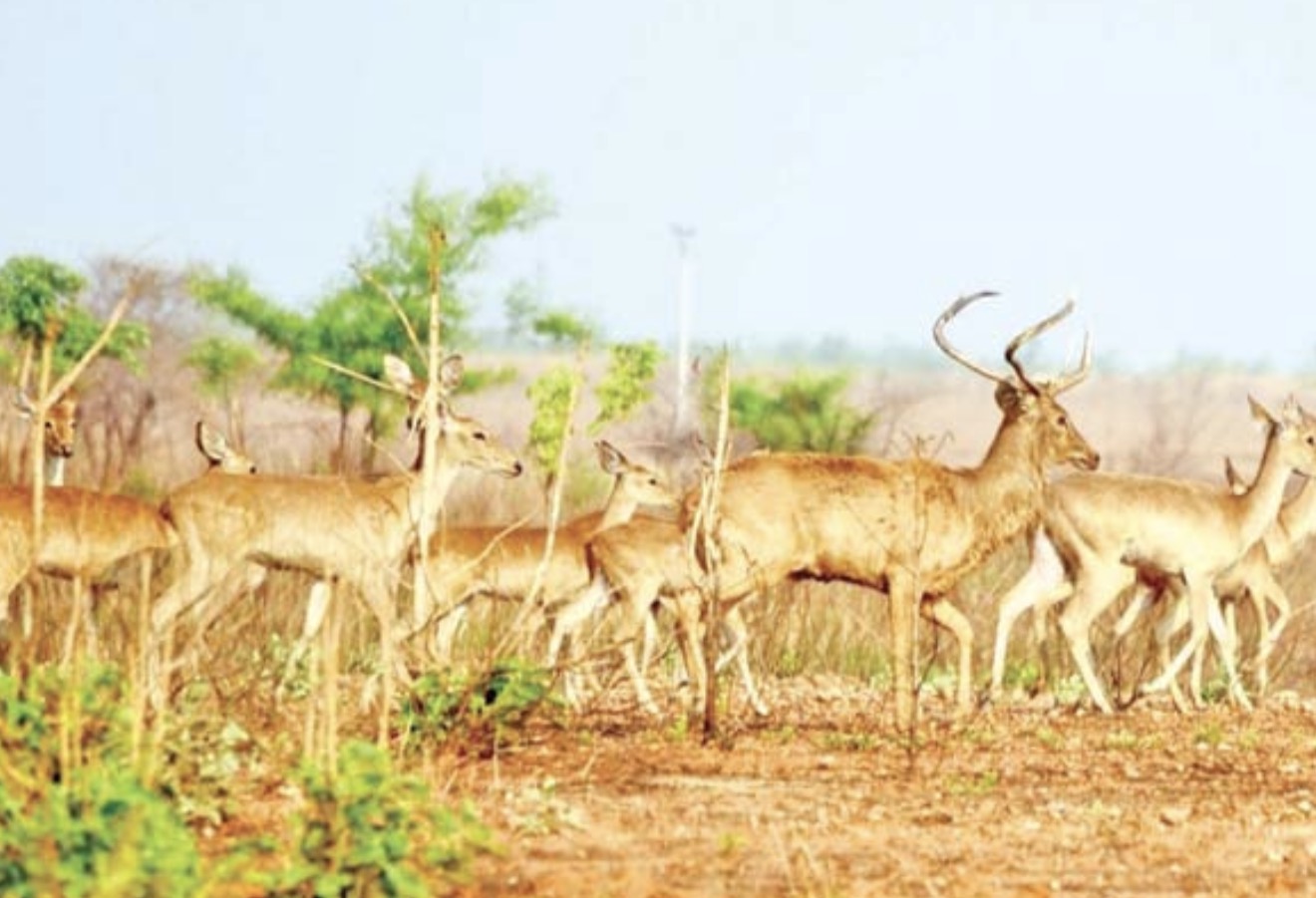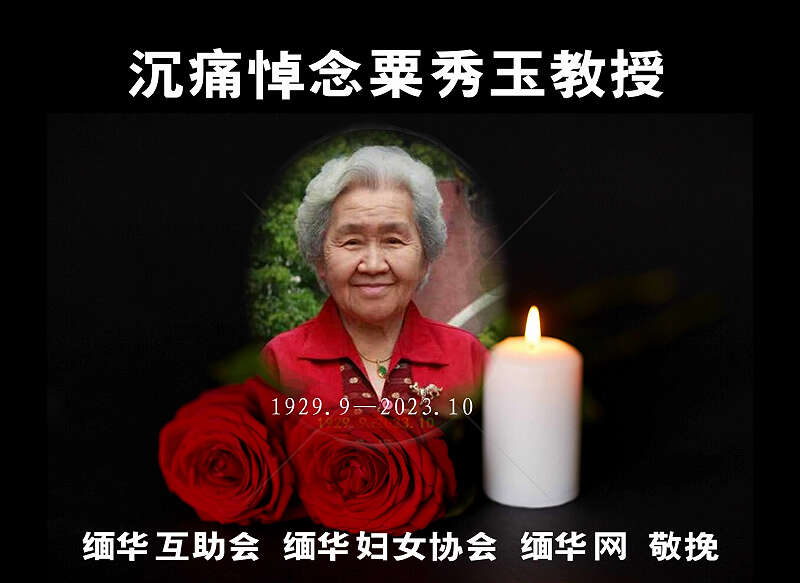刘蕴:当中国遇上骠国—缅甸蒲甘的中骠文双语碑铭

本文发表于2018年7月30日Tea Circle
Liu Yun analyzes the significance of an inscription found at the Tharaba Gate.
刘蕴分析了发现于缅甸蒲甘多罗跋门的一篇碑铭的重要性。
Myanmar is one of the richest countries of Asia in lithic inscriptions that have been used as great facility of historical research. In his 2005 book, The Mists of Rāmañña: The Legend That Was Lower Burma, historian Michael Aung-Thwin devoted one chapter, “The Pyū Millennium,” to a description of the Pyu group of the first millennium. It is from this group that the Burmese speaker borrowed Indic culture for subsequent rise of thePagan kingdom. Aung-Thwin pointed out (emphasis added):
缅甸是碑铭存量最丰富的亚洲国家之一,碑铭极大促进了历史研究的发展。历史学家迈克尔·昂敦于2005年出版的著作《罗摩那迷雾:下缅甸的传说》有一章题为《骠人的千年》,整篇讨论了公元后第一个千年居住在缅甸土地上的骠人的基本状况。昂敦指出(着重标记为笔者所加):
“Indeed, several Pyū-language inscriptions were discovered centuries after the Nanchao raid of 832: one at Pagán in the reliquary of Aniruddha’s Shwéhsandaw Pagoda and therefore thought to be mid-eleventh century, another near the front (east) gate of Pagán with an unknown date, the third, of course, the famous fourface of the so called Myazedi Inscriptions of 1112 AD, and the fourth in Lower Burma. ”
“事实上,公元832年南诏劫掠骠国之后的几个世纪内刻写的几通骠文碑铭至今仍被保留了下来。一个在阿奴律陀所建瑞山杜佛塔内,因此可以追溯至11世纪;另一个原本树立在蒲甘东门口附近,具体年代不明;第三个,当然就是著名的以四种文字刻写的妙齐提碑铭,时间为公元1112年;第四个位于下缅甸。”

Currently held in Pagan Archaeological Museum, the illegible Pyu inscription of an “unknown date” was found near the Tharaba gate which, located to the east of Pagan, is the only surviving gate of the old city. Sino-Burmese historians Taw Sein Ko (1916) and Chen Yi-sein (1960) argued, based on their pioneer studies of the much defaced Chinese epigraphy on the reverse side of the Pyu scripts, that the bilingual stone dates back to the late 13th century when the Mongol campaigns of the Pagan Kingdom were launched by ambitious Kublai Khan (r.1271-1294) and a subsequent fragile tributary relationship was established. Strikingly different from the traditional way of writing vertically from top to bottom, the Chinese texts at Pagan run horizontally from left to right, in a Burmanized way. The classic characters that have been identified so far read as follows:
所谓“时间不明”、无法辨识的那通骠文碑铭目前被置于蒲甘考古博物馆内。这块石碑是在多罗跋门附近发现的,该处位于蒲甘东面,是目前古城仅存的城门遗址。缅华历史学家杜成诰和陈孺性分别于1916年和1960年撰文,依据骠文背面模糊不清的中文碑铭,他们认为石碑的年代是13世纪末,当时忽必烈(1271-1294年在位)对蒲甘国发动了战争,此后双方建立一段脆弱的朝贡关系。这通中文碑铭极为明显的特征就是其汉字排列方式——并非中国传统的自上而下的顺序,而是从左至右横向书写,这与当时缅文的书写方式相同。目前为止能够辨认的碑文汉字包括:
Text 文字
Huang Fa 皇法
Yun Nan Sheng Dao Bie Sheng 云南省到别省
[Bu] Yin Dao Zei 隐盗贼
Bu Can Mian Guo 不残缅国
Huang Ding Pu Gan 皇定蒲甘
Translation 翻译
Imperial Orders
From Yunnan to otherprovinces
Shall not hide the Rebels
Shall not destroy the MyanmarKingdom
The Emperor conquers thecity of Pagan

In terms of the clear words “shall not destroy the Myanmar Kingdom,” similar content had been recorded in a historical source from Vietnam. In 1292, a Chinese courtier arrogantly told the Crown Prince of Dai Viet:
其中“不残缅国”较为清晰,也值得研究,特别是越南史书中有相同的记载。1292年,元朝使者张立道对安南世子说:
“Several years ago, the Emperor ordered Yesun Temur, the Prince of Yunnan, to launch a Myanmar campaign. The Emperor also ruled an order to ban the burning of temples and palaces, and ban the demolition of tombs as well. The Prince of Yunnan obeyed the order. After the great troops marched into Myanmar, the king of Mian (Myanmar) fled for fear. The Prince of Yunnan had neither slaughtered the Myanmar people , nor destroyed the templesand tombs. ”
“昔年,天子命也先帖木儿云南王伐缅日,谕以毋烧寺舍,毋焚宫室,毋毁坟墓。云南王钦依上命。大军入境,缅王窜避,云南王不行杀戮,寺舍宫室,悉无所毁,缅王感德,遂降。”

多罗跋门是蒲甘仅存的城门遗址
Certainly, the Pagan city had never “perished amid the blood and flame” as a result of Mongols. On the contrary, it was protected well and left almost intact by Kublai Khan’s edict. Indeed, the physical evidence gathered by UNESCO’s team shows that the damage or destruction of the religious monuments of Pagan was inflicted by natural forces rather than wars. Even the picture of a Mongol archer on the walls of Bagan’s Kyanzitta Umin does not support the “Mongol carnage” hypothesis. The archer is actually aiming at aduck, while a Mongol officer in the same bucolic picture lounges under a tree with a bird of prey perched on his wrist. Instead of a portrait of war, it should really be viewed as a genre-painting of nomadic people.
所以,蒲甘并没有“于鞑靼征骑之血腥火影下灭亡”。相反,缅甸古都在忽必烈圣旨的保护下完好无损。事实上,联合国教科文组织的考古证据表明,蒲甘地区宗教建筑的损毁是由于自然因素,而非战争。就算是江喜陀洞窟内绘有蒙古弓箭手的壁画也不能支持“蒙古浩劫”的说法。这幅壁画具有草原风情,里面的弓箭手对准的是一只野鸭,而他旁边的蒙古人在棕榈树下休息,手臂上架着鹰隼。我们可以将其视为游牧民族的风俗画,和战争毫无关系。


Historical background suggests that the “Tharaba gate” Chinese inscription, which reads like spoken language with an unfamiliar grammatical structure, is probably the edict issued in 1287 by Kublai Khan aiming to protect the Pagan city. Inscriptions of imperial decrees by Mongol emperors of Yuan dynasty (1271-1368) have also been found in many Buddhist and Taoist temples across China. The decrees mostly included orders on the exemption of tax and fee imposed on these temples by local authorities. The special-designed, fixed format letters of the emperors in Beijing were sent to civil and military officials who were responsible fordaily management of local affairs. The original texts of decrees were Uighur-style or Hpags-pa Mongolian scripts, which were then officially translated, based on certain rigid rules, word-by-word into contemporary vernacular Chinese-language.Thus, the Chinese language grammatical structures were mixed with Mongolian components.
“多罗跋门”中文碑铭具有口语特点和奇怪的语法结构,历史背景表明它可能是1287年忽必烈颁布的圣旨,目的是保护蒲甘。中国境内元代的道观和寺庙遗址发现了不少圣旨碑,内容都是下令地方政府和军队不得向这些道观和寺庙征收赋税。圣旨的格式也都比较固定,由身居北京的皇帝颁布给处理具体事务的地方官员。圣旨的原文为回鹘式蒙古文或者巴思八蒙古文,然后交由相关衙署根据规则逐字逐句一 一对应硬译为汉文,使用的字词是当时的口语。于是,这些中文圣旨夹杂着蒙古语的语法结构。
Historian G. H. Luce felt puzzled by the seemly anachronic Pyu text. He wondered: “Did [the author of the inscription] ‘encourage the nationalists’ by seeking to revive the Pyu language?” However, considering that in China’s Yuan dynasty a tablet with edict inscriptions is usually a ban order (as the Chinese text at Pagan indicates), and assuming that the Pyu text is but a translation of the Chineseor Mongolian text ( just like the case of Myazedi inscriptions), then following scenario is highly possible: the Chinese-Pyu bilingual inscriptions were aimed at forbidding the Chinese and Pyu speaking soldiers to destroy the Pagan city. These non-Mongolian soldiers accounted for a majority of the expeditionary army sent to inland Pagan kingdom by Kublai Khan.
历史学家卢斯对这些似乎“时空错乱”的骠文困惑不解,他写道:“难道怯烈(笔者按:卢斯认为是元朝官员怯烈树立此碑)想通过复兴骠文来激励骠人的民族主义?” 但是,鉴于元代圣旨碑内容都是禁令(正如蒲甘中文碑铭所显示的那样),并假设骠文是中文的翻译,而非别的内容,下述结论是极有可能的:蒲甘的中骠文双语碑铭是向蒙古大军中懂汉语和骠语的官兵发布的禁令,不许他们破坏蒲甘城。忽必烈派往蒲甘王国腹地的远征军中,非蒙古族士兵占据绝大部分。
Even though Chinese records stated that Pyu kingdom was looted and plundered by the year of 832, but nothing suggests that the Pyu polity as a whole was destroyed. In fact, the Pyu as a people continued to be mentioned in old Burmese inscriptions as late as the second half of the 14th century, i.e. referencing“a Pyu concubine, ” “a Pyu carpenter,” “a Pyu firewood dealer, ” and so on. More interestingly, according to the Chinese sources that recorded the Yuan dynasty’s Burma campaign, there was a strategic location “Piao Dian”(PyuKingdom) commanding one of the three routes from China’s Yunnan province into Burma territory. Particularly during the 1287 campaign, 3000 invading soldiers encamped and guarded the “Pyu Kingdom. ”
虽然中国史书记载骠国于公元832年被南诏国军队所劫掠,但这并不能说明骠国作为一个政治体被整体摧毁。实际上,此后直到14世纪下半叶,缅文碑铭一直都有骠人的记录,比如骠人嫔妃、骠人木匠、骠人柴火商等等。更有意思的是,中国元代史书记载,中缅边境有一处战略要地被“骠甸”控制,这是当时三条通往蒲甘国的咽喉要道之一。1287年元缅战争期间,有3000元朝军队驻守在这里。
Thus the Chinese-Pyu bilingual inscriptions at Pagan present a narrative that during the late 13th century the Pyu soldiers allied with the Chinese army to fight against Pagan kingdom. Since then the areas where Chinese met Pyu have become China-Myanmar borderland. Still, nowadays, fatal conflicts break out frequently in this terrain, with peace and stability are urgently desired by people across the border.
因此,蒲甘的中骠文双语碑铭表明,13世纪末骠人军队和中国军队联合进攻蒲甘王国。从那个时候开始,中国人和骠人相遇的地方就成为中缅两国的边境地区。时至今日,这块地方仍然会爆发惨烈的冲突,和平稳定的局面是边疆人民的渴望。
评论列表 共有 0 条评论
最新导读

热门文章
















发表评论 取消回复